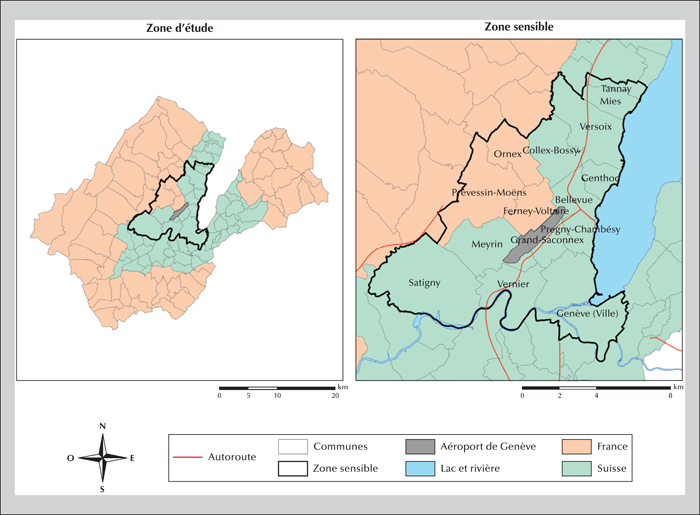Environnement, Risques & Santé
MENUThe effectiveness of health impact assessment : about Geneva airport case Volume 17, issue 5, September-October 2018
Université de Genève
9, chemin des Mines
1202 Genève
Suisse
- Key words: health impact assessment, prospective assessment, assessment effectiveness
- DOI : 10.1684/ers.2018.1220
- Page(s) : 467-80
- Published in: 2018
The cross-border association of municipalities in the vicinity of the Geneva international airport (GA) demanded an environmental impact study (EIS) of the airport's development plan. The Geneva government finally agreed that one should be performed early in the summer of 2015. After an international call for projects, a consortium of experts, coordinated by the Global Health Institute of the University of Geneva and bringing together university, research institutions, private consulting firms, and the associative sector, conducted this EIS between October 2015 and October 2016. Its objective was to quantify the current (reference state 2014) and future (scenario 2030) effects of airport activity. A group of senior canton officials in the relevant departments (environment, health, territorial development, economics) and representatives of the municipalities near the airport supported this EIS and validated its procedure, methodology, and other strategic choices.
The results showed that the health impact of air pollution would be greater in 2030 than that of noise; moreover, daytime noise would improve while nocturnal noise would grow worse. A telephone survey concerning quality of life questioned 750 adults living in the study area and corroborated trends similar to those shown by the quantitative analysis of the health risks. The very positive contribution of the airport in terms of the region's economy and jobs and the health consequences of this contribution were also explained.
This study analyzes the effectiveness of the EIS procedure according to the conceptual framework proposed by Harris-Roxas & Harris in 2013. This EIS, performed in a potentially very conflictual context, met the principal criteria for effectiveness of the process. It was also effective in reaching its short-term goals. While it is too early to judge its long-term effects, encouraging signs have been noted.
![]() This work is licensed under a
Creative Commons Attribution-NonCommercial-NoDerivatives 4.0 International License
This work is licensed under a
Creative Commons Attribution-NonCommercial-NoDerivatives 4.0 International License


